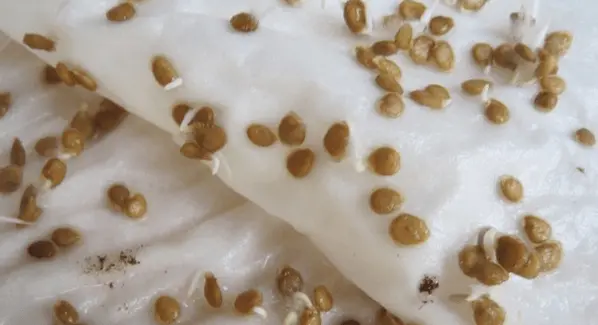Contents
Getting a great tomato crop depends on many factors. First of all – from well-chosen seeds and properly grown seedlings. Under our weather conditions, it is possible to achieve the ripening of tomatoes only with the seedling planting method, and you can be sure of the quality and naturalness of the planting material only in one case – when growing tomato seedlings at home.
Selection and preparation of planting material
Planting seedlings at home is very easy. There are several advantages to growing seedlings on your own. Firstly, you can use the soil from your site, so home plants will be prepared in advance for planting in the soil, take root faster and develop well. Secondly, you can plant and grow absolutely any variety of tomato, and not the one chosen by the seedling seller. The video at the end of the recording shows how to properly plant seedlings at home. In order to plant seedlings at home, you will need a container for planting, soil and seeds.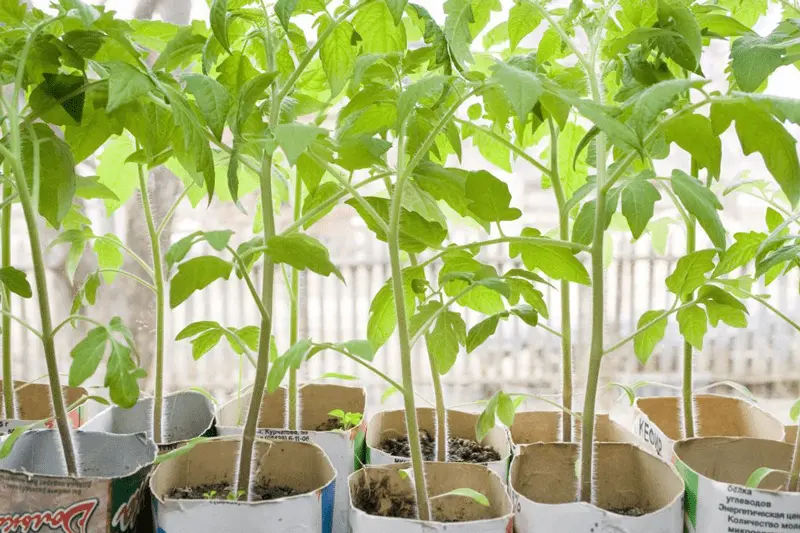
Growing seedlings at home always begins with the selection of seeds for planting. There are a great many varieties of tomatoes on the market now, in which it is easy to get lost. Therefore, to begin with, choose a variety that you have already grown before and add to it a few others that you like. When buying, pay attention to the indicated fruit ripening dates, plant height and purity of selection.
Tomato seedlings can be grown at home from varietal seeds and from hybrids. The latter are always labeled F1 on the packaging. Plants from varietal seeds are able to preserve and transmit properties “by inheritance”, both positive and equally negative. From the grown fruits, it will subsequently be possible to collect seeds for the next planting.
Experts consider hybrids to be a better material for growing vegetables, because. they almost always show better yields, resistance to diseases and weather conditions, ripen faster, which is an indisputable plus for our short summer. True, the price for them will be higher than varietal seeds, and they are not suitable for subsequent reproduction, therefore, it makes no sense to collect seeds from the fruits of the hybrid variety you love – you cannot grow anything of high quality from this, no matter how hard you try. It is best to plant hybrid varieties of tomatoes at home.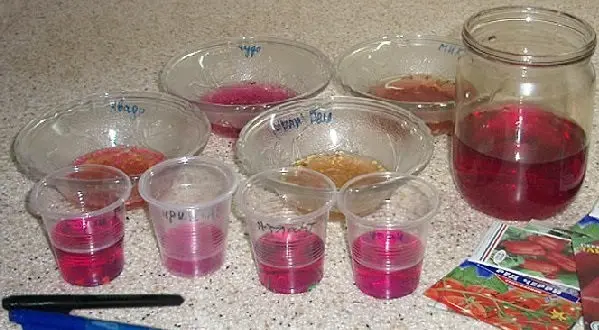
His one important issue is seed producers. Nothing definite can be advised here – everything is achieved only by experience. Try to save purchased tomato packages to determine the quality of the seed. You can even record your observations in order to repeat the success in subsequent years or abandon this manufacturer. Familiar gardeners will also be able to guide you, who will advise certain companies in which they have already purchased high-quality seeds for tomato seedlings at home. It has been proven that hybrid varieties are best suited for the home. This is confirmed by experts in many training videos.
So, let’s assume that you have chosen the seeds, purchased them and are mentally ready for the process of growing seedlings at home. However, before planting them in the ground, a number of measures must be taken to prepare them:
- Pour the contents of the purchased bag for visual observation. If there are empty seeds, broken or very small ones, we remove them completely. The emptiness of the seeds can be determined by throwing the material into a glass of salty soda for 5 minutes. Everything that has surfaced is not suitable for planting. These are empty seeds. For the further process, we need those that remained at the bottom. They should be carefully rinsed with clean water.
- Next, we disinfect the seeds by dipping them in a barely warm, weak solution of potassium permanganate, holding for 10-15 minutes. Potassium permanganate can be successfully replaced with hydrogen peroxide (we dilute 5 ml with 100 g of water), the solution should also be barely warm, 40 degrees. Potassium permanganate for tomato seeds
- Some gardeners are engaged in hardening seeds. You can try this method too, using some of the material to compare the results when harvesting. The method consists in keeping the swollen seeds in the refrigerator for 1-2 days.

- Next, spread the seeds on a wet cloth for germination. Try to arrange them so that each seed lies separately and does not touch its neighbors. You can soak the seeds in a mineral fertilizer solution, this will increase their germination. Tableted types of trace elements can be purchased at the store. We cover the tomato seeds with the same cloth, put in a warm place and make sure that the cloth always remains moist. Can be covered with cling film over fabric. In about 2-3 days you will receive the material completely ready for planting.
Soil preparation and site
While our future home seedlings from seeds are preparing for planting, we will prepare the soil. The soil for a tomato can be prepared in several ways, the only prerequisite is that it must be loose. This is achieved by using various additives in sod land, such as peat or sawdust. Seedlings develop well in crushed coconut fiber, which is rich in minerals useful for plant development and actively resists the development of rot.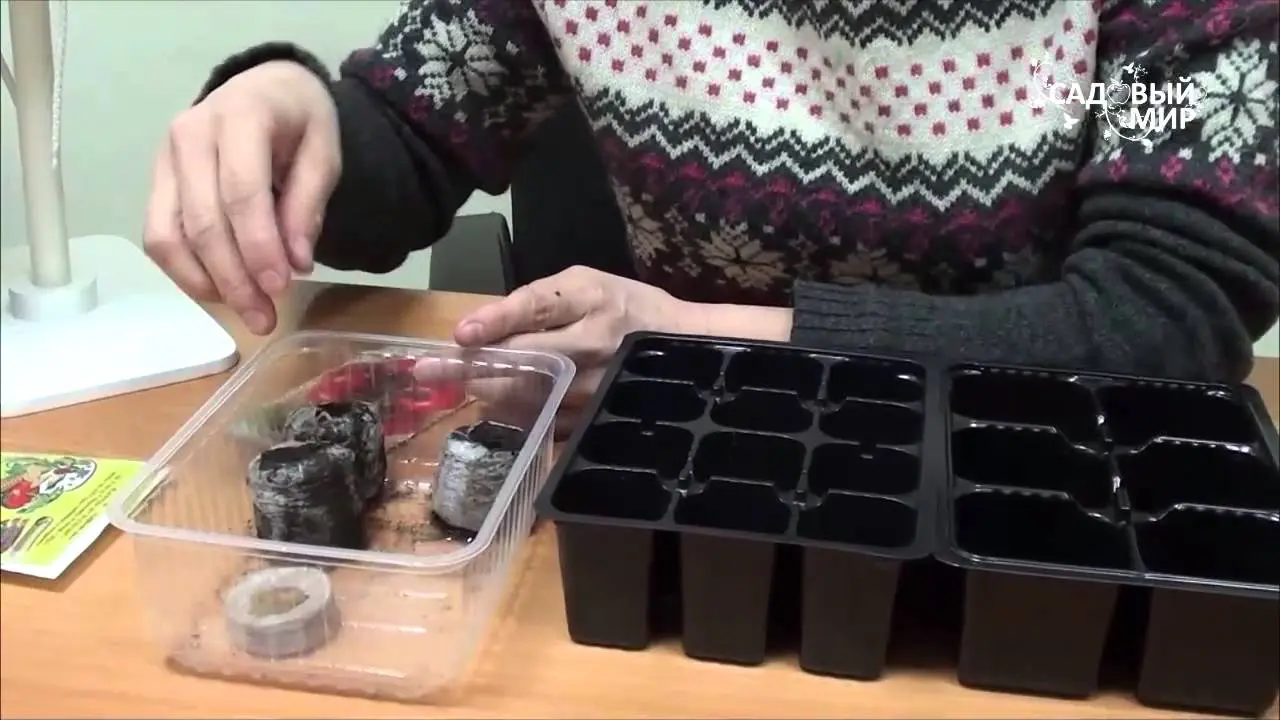
Here are two examples of soil for tomato seedlings:
- We take in equal proportions the land from the garden, humus, peat. We add wood ash (up to 1 l of ash will go to 0,5 bucket of the mixture), superphosphate (about 2 matchboxes are enough for a bucket of soil) and, of course, water for moistening.
- We take in equal proportions the earth from the garden, river sand, peat or compost. Next, we prepare an aqueous solution of fertilizers. For 10 liters of water, you will need 20 g of potassium sulfate, 10 g of urea and 30 g of superphosphate.
You can also use the usual soil mixture for vegetables, bought in the store, it is completely ready and does not require any additives.
Now you need to prepare a container for seedlings. Here it is necessary to be guided by personal preferences. Any pots, boxes, cups and other containers will do. You can purchase special mini-greenhouses for this.
Tomato is a heat-loving vegetable, so try to choose a sunny and warm place for growing seedlings. The optimum temperature is +22 degrees.
A balcony for initial germination is not suitable if you do not have additional heating there. Thus, you already know how to plant seeds at home and how to germinate them. You can also watch the video at the end of the recording and reinforce your knowledge.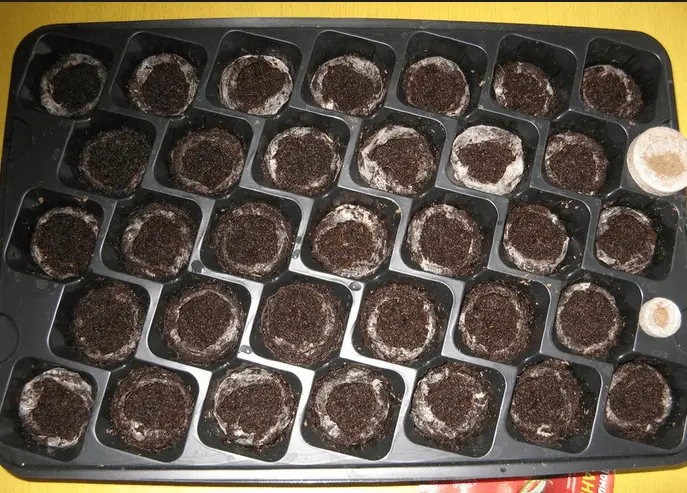
Terms of sowing
Another important issue to consider is when to start sowing. Thoughts the sooner the better drive away. Seedlings planted in January or February will turn into no one knows what until the time of planting in the ground. Experienced gardeners recommend March as the best month. Mid-March is the perfect time to plant tomato seeds. At this time, there is already a fairly long daylight hours, the sun often appears in the sky, and the plants will be in comfortable conditions for themselves and automatically “programmed” for a good harvest.
You can be late with landing until the beginning of April. This time is calculated based on the needs of the plant. It is recommended to keep tomatoes in seedlings for no more than 60 days, optimally – 50-55. Therefore, you can calculate the time yourself. If planting is done in the first decade of May in a greenhouse, then we take 45 days for seedling growth, minus about a week for seed germination. Earlier varieties of tomato can be planted in early April.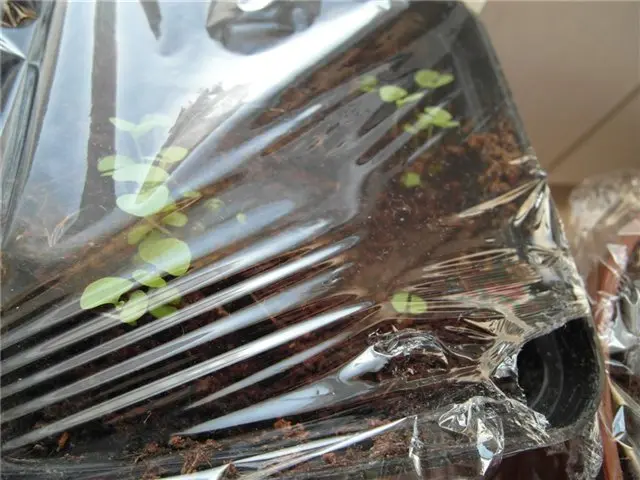
Sowing
The sowing process is simple. We fill the selected container with prepared soil, moisten it well, cover it with a film for a while to achieve uniform moistening. Leave for 5-6 hours. Tomato seedlings covered with foil
For sowing in boxes – we make shallow grooves of 1 cm, for sowing in pots – small indentations. Gently lower the seed into the soil. You can use a toothpick for this. When planting in the grooves, maintain a distance of 2 cm between the seeds and 5 cm between the furrows. Gently sprinkle with earth and moisten the landing site with a sprayer.
For speed of germination, the container with seeds is covered with a film, creating greenhouse conditions. As soon as the plants sprout, it is about 5-7 days, the film must be removed.
Care of seedlings
Seedling care is the most important stage in growing tomatoes. At the initial stage, the air temperature of the room in which the plants stand should remain + 22-23 degrees. As needed, watering should be carried out with filtered or settled water from a tap at room temperature. Rain water will work too.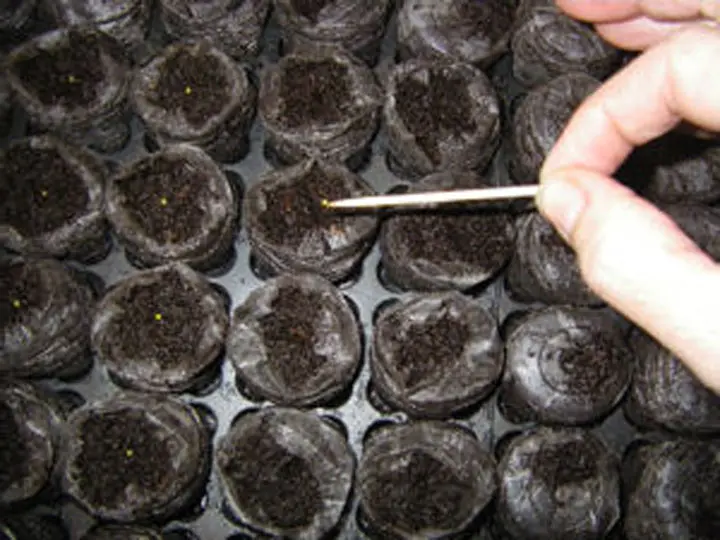
After about a week, we begin to gradually reduce the temperature by 5-7 degrees to +17-19. Already during this period, you can ventilate the room, but avoid the formation of drafts. When the plants have developed well (the first true leaf has grown by 5 cm), the tomatoes need to be transplanted. At the same time, it is recommended to cut the main root by a third in order to stimulate the formation of a developed root system. Re-planting is carried out with deepening to cotyledon sheets.
What to do if there are few sunny days and you are afraid that the seedlings will develop poorly? Then we use additional fluorescent lighting. We turn on the lamp for 18 hours. But many vegetable growers do not do this, and their seedlings are no worse.
Do not forget to regularly water the seedlings at intervals of about once a week so that the tomato root system develops well. If you notice that the seedlings are too long, then you should reduce watering and lower the temperature in the room. You can feed the seedlings a little with superphosphate or ready-made fertilizers for vegetables “GUMI” or “Baikal EM-1”. Before planting, you should harden the plants, increasing the ventilation. You can then transfer the finished seedlings to the greenhouse and leave for several days, opening the windows for a short time. After hardening, the plants are completely ready for transfer to a permanent place of growth. Now you are familiar with all the main steps and subtleties of how to grow tomato seedlings at home. Therefore, we wish you excellent results and good harvests.
Video “Growing tomato seedlings”
After watching the recording, you will learn how to grow healthy tomato seedlings at home and how to grow them correctly and in what time frame.










